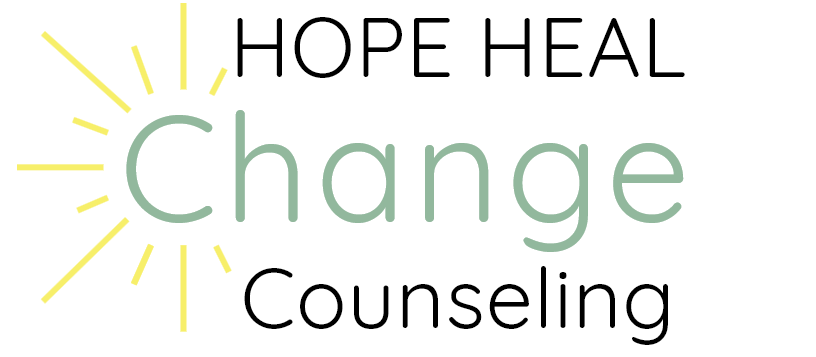The smell of turkey in the oven and the roar of the football game on TV. The twinkly lights on the trees and the anticipation of grandparents coming to visit. Ah yes, the holiday season is arriving. For most it’s a time of joy, love, laughter, and the sharing of embarrassing family stories around the dinner table.
However, for those in recovery, it’s possibly a time of anxiety, dread, fear, overthinking, isolation, and avoidance. Whether this is the first holiday in sobriety or the thirtieth, it’s a time to be cautious. The holidays are the few months of the year where triggers, cravings, and relapse are at their highest.
First, if you are clean and sober, I want to congratulate you! You are one of the few who has managed to overcome the cunning, baffling, and powerful disease of addiction. 1 day, 30 days, 1 year, or 40+ years – any amount of time is to be celebrated and acknowledged.
Why is maintaining sobriety so challenging over the holidays and what are some strategies to cope with triggers and cravings? To answer this question, lets first address various types of triggers and cravings that can be experienced. It is important to understand one’s own personal triggers to be better prepared to implement strategies to decrease the likelihood of relapse.
Triggers & Cravings
Physical Triggers/Cravings
These occur when your body physically needs the drink or drug to feel “normal.” Some symptoms of physical cravings can include Delirium Tremors (DTs/“The Shakes”), paranoia, sweats, feeling feverish, nausea, anxiety, irritability, depression, dry mouth, fatigue, and insomnia.
Emotional Triggers/Cravings
These are external triggers that bring on negative feelings that were previously coped with by using drugs and alcohol. An example could be seeing an over-bearing family member who triggers feelings of self-doubt, anxiety, or stress. Some signs of emotional cravings include feeling irritable for no reason, beginning to isolate, taking others inventory, and rejecting constructive feedback.
Behavioral Triggers/Cravings
These are cravings that occur because of the compulsion to engage in the act of drinking or using even when physical and emotional cravings are not present. Behavioral cravings could include cooking dinner where a glass of wine was always present, watching the football game where a beer was always in hand, or engaging in a holiday tradition where alcohol was involved. Even though someone may not be “craving” the drink or drug, the situation and past behavior triggers a person to want to use.
Residual Triggers
This is not one that’s talked about a lot. However, it’s very important to address as this is one of the main causes of relapse that I have seen in my years working as a therapist.
Imagine this: a person in recovery wants to “test” their sobriety (never a good idea by the way), so they go into a liquor store. They walk around, look at the bottles, and even walk by their “go to” drink. After a few minutes they leave the store without a purchase. They feel happy, proud, excited, and even give themselves a pat on the back for being so strong as to not purchase anything. They may even have the irrational thought of, “I’m cured!”
Here’s why this is a horrible idea and I encourage anyone reading this to never “test” their recovery. While making the conscious decision to enter the liquor store, they’re in a stable mindset. They have the intention not to buy anything. They’ve already played the tape through on what happens if they drink. They’re “strong” in their conviction not to drink. However, days after leaving the store, they continue thinking about being there, the strength they felt for not buying, and what memories each of those bottles brought. Then, when they least expect it, they relapse.
The relapse happens because their guard is down. They’re not in the same mindset days later that they were in when they walked in the store. All those emotional and behavioral cravings and triggers creep up on them when they’re not expecting.


7 Strategies for Coping with Triggers & Cravings (so you can have a sober holiday)
1. Ask for help/keep others informed
I know, I know, this is a hard one. It’s difficult to ask for help, isn’t it? It’s challenging to be emotionally honest with others and admit that you’re struggling. However, this is so important, especially during the holidays. Tell on yourself! Remember, this disease is cunning, baffling, and powerful and you HAVE to tell on it. As the famous therapist and professor, Brene Brown says, “shame hates its name.” The more you lean into acknowledging the truth about your emotional, mental, and physical state of being, the less power the disease has over you.
2. Go to meetings, stay sober
Typically, on Thanksgiving Day, Christmas Day, and sometimes on Christmas Eve, the Alcoholics Anonymous (AA) and Narcotics Anonymous (NA) fellowships offer “marathon meetings” where a meeting is held every hour. Check your local When & Where to find a meeting closest to you.
3. Have a sponsor
Making sure you have a solid, reliable, and available sponsor during the holidays is crucial. Be honest with them too and make sure they’re aware of where you’ll be during the holidays and the best way to get in touch with them.
4. Re-schedule your day
Remember above when I mentioned behavioral triggers and cravings? This applies to those. It’s important to be aware of times of the day where you typically drank/used and rescheduling your day to avoid those behavioral cravings. For example, if you typically drank while cooking dinner, try cooking a few things ahead of time and go to a meeting during the time you would normally cook. If a football game always included friends and beer, perhaps ask your friends to come over after the game and watch something else instead. If you have a holiday tradition in the evening, reschedule it to the morning where having a drink might be less of an option.
5. Make an exit plan
Another important strategy to work on either with a therapist or a sponsor is to come up with an exit plan if you need to get out of a high stress situation. A plan like this includes making a list of possible triggers and ensuring you have a way to exit if needed: drive your own car to a family gathering so you’re able to leave if necessary. Have a code word with your brother or sister so they can assist with distracting you from triggers. Or make plans with a sponsor on the day of a potentially triggering event.
6. Change environments
I realize this is not feasible for everyone. However, if you’re able, go on a trip during the holidays. Get away from people, places, and situations that could be a trigger. Take a long weekend to a place where there aren’t negative memories, people who cause you stress, or the pressure to cook an elaborate dinner. Just make sure to take someone with you who also has the same goal as you to maintain sobriety.
7. Remembering that the holiday season doesn’t mean you have to drink
Thank you to a client of mine for this one. With this being her third holiday season in recovery, she realized while hosting last year’s Thanksgiving that no one else was drunk. She stated that every year during her active addiction, she had a mindset of, “you get drunk over the holidays and everyone else is drunk too.” It took her getting sober to realize that SHE was the only one who was drunk and due to her irrational mindset, she had convinced herself during those times that everyone else was drunk, too. Once she had this understanding, it became easier for her to let go of the anxiety and social pressure that she needed to drink.
Whether you’re reading this because you’re in recovery and need a little extra support and encouragement or you’re a loved one of someone in recovery, I want you to know that you’re not alone and that the holidays don’t have to be an excuse for relapse. As stated above, the disease is cunning, baffling, and powerful; however, with support from others and having a conscious mindset, long-term recovery is possible.
Peace, love, and joy,

